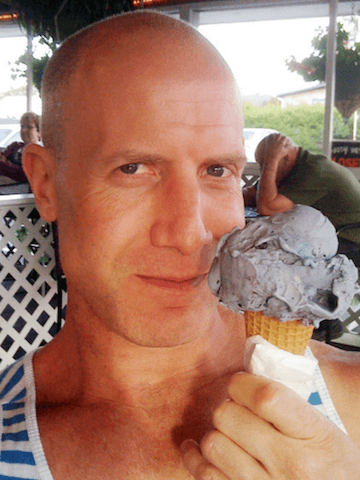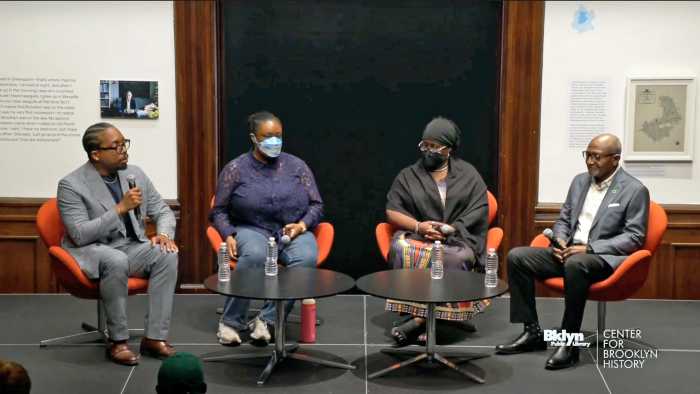Rooney Mara in Steven Soderbergh's “Side Effects.” | OPEN ROAD FILMS
It’s a bit of a spoiler to reveal that Steven Soderbergh’s film “Side Effects” contains a surprise queer twist in which a lesbian couple tries to outwit the law. The reveal, though, is really so “Deathtrap” — and has a more damaging side effect than the film’s underlying “Will they or won’t they get away with it?” suspense.
The lesbians are venal, their relationship more about its financial benefits than any hint of actual love. When one character guesses that another woman “likes girls,” she uses that information to her advantage, seducing the closeted gal and embroiling her in multiple crimes. She never acknowledges being queer herself — she uses sexuality to lure a co-conspirator to serve her greedy ends. Soderbergh’s and screenwriter Scott Z. Burns’ equation of the women’s lesbianism with villainy is simply irresponsible.
Soderbergh’s “Side Effects” recalls bad old days of “Basic Instinct,” “Silence of the Lambs,” “Cruising”
All the more so because their sex scenes end up generating unintentional laughs. A flashback shows one of the women posing seductively, while other scenes feature teasing near-lip-locks that come across as ludicrous. When the women final do embrace and start to undress, their impending coitus is interrupted — but not before a few kisses and clinches are shown. The scene reeks of exploitation, not any true exploration of the characters. The relationship between the women is both unconvincing and unnecessary. Their crimes have nothing to do with their passion.
Rooney Mara, who plays one of the two characters, received considerable recognition and an Academy Award nomination for her portrayal of bisexual Lisbeth Salander in the American version of “The Girl with the Dragon Tattoo.” There, Mara played a morally challenged character, but Lisbeth’s violent behavior — which included exacting a nasty revenge on her rapist — was gratifying because the punishment she meted out fit the crime. Her sexuality was part of what informed her view of what she suffered as well as how she reacted; it was not simply dropped into the plot as a device to sensationalize the story.
There is no reason gay and lesbian characters, of course, cannot or should not be evil on screen. In fact, some of the best queer films feature villains. The lesbian classic “Bound,” directed by Andy and Lana Wachowski — Lana then still living as Larry — had lesbian lovers outwitting the mob, and it was sexy, stylish, and satisfying as hell.
New Queer Cinema also offered great killer gay couples. Gregg Araki’s “The Living End” featured two angry HIV-positive lovers on the lam who go on a murderous crime spree to act up and lash out in an anarchic “fuck you” to the world. Tom Kalin’s “Swoon” was a vivid reimagining of the Leopold and Loeb “thrill-kill” case (also portrayed in “Compulsion” and loosely, as well, in “Rope”), where the lovers bond over their murder of a young boy only to have the crime undo them.
And as recently as 2009, there was the fabulous screwball conman comedy “I Love You Phillip Morris” that chronicled the great — albeit illegal — lengths a gay man (Jim Carrey) would go to be with the man he loves (Ewan McGregor). For some queer villains — like the gay couple in the muy caliente Argentine drama “Burnt Money” — the best way to show how much you love your partner is to break the law.
But love is not the issue in “Side Effects,” which will remind many viewers of the brouhaha 20 years ago when Paul Verhoeven’s “Basic Instinct” portrayed bisexual Catherine Tramell (Sharon Stone) as a murderous sociopath.
The principle is the same with Soderbergh’s film. The LGBT community should be asking, “Why are the villainous characters lesbian?” In 2010, Alejandro González Iñárritu’s “Biutiful” featured gay Asian characters trafficking in humans. The villains’ sexuality was not developed beyond being a symbol of their bad behavior, yet that issue went largely undiscussed. “Side Effects” might well similarly skate by without the scrutiny it deserves on this point.
When protests do happen — as when gay groups responded to Buffalo Bill, the serial killer in “Silence of the Lambs” — they can be effective in raising awareness of how queer characters are too often treated in film. William Friedkin’s “Cruising” also drew harsh criticism for the way the gay leather scene was portrayed.
Even queer filmmakers can find themselves on the receiving end of a backlash. Todd Verow’s daring and provocative 1995 adaptation of Dennis Cooper’s “Frisk” provoked controversy, protest, and, at a queer festival in San Francisco, a near riot — which is perhaps what a queer film about killing should do. But the outrage was directed more at the film’s realistic, fetishized sexual violence, not its same-sex nature per se.
And remember, Charlize Theron won an Oscar for playing lesbian serial killer Aileen Wuornos in “Monster,” proving there can be great portrayals, done with artistic integrity, of bad queers.
Hollywood has long featured queer villains. Hitchcock had plenty of gay killers (often played by gay actors) in films ranging from “North By Northwest” and “Psycho” to “Strangers on a Train” and “Rope.” And like the memorable queer villain George Macready played in “Gilda,” the sexuality of these characters was evident, but not determinative. It may have informed or enhanced their sinister nature, but it was not the reason for their bad behavior. The same could be said about one of the more noteworthy queer villains in recent film, Javier Bardem’s fey, gay Bond bad guy, Silva, in “Skyfall.”
If only “Side Effects” had developed its femme fatales better, maybe viewers would root for them, rather than boo them.
SIDE EFFECTS | Directed by Steven Soderbergh | Open Road Films | Opens citywide Feb. 8



































